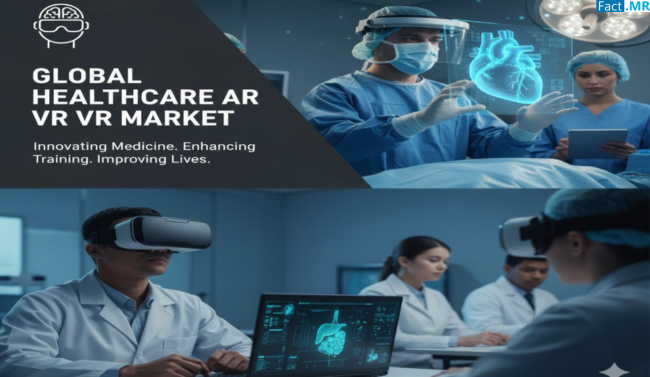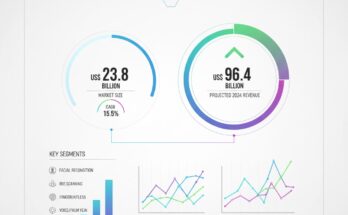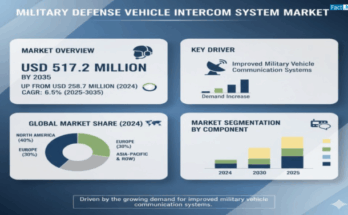The healthcare sector is witnessing a technological revolution, with augmented reality (AR) and virtual reality (VR) emerging as transformative tools in patient care, medical training, surgical planning, and rehabilitation. By creating immersive and interactive environments, these technologies are reshaping how healthcare professionals diagnose, treat, and educate, while enhancing patient experiences. AR and VR offer unparalleled visualization of complex anatomical structures, improving precision in medical procedures and boosting confidence among healthcare providers.
Market Overview
The Healthcare AR VR market has been gaining significant momentum, driven by rising investments in advanced medical technologies and growing adoption across hospitals, clinics, and research institutions. AR and VR applications extend across multiple facets of healthcare, from immersive training simulations for medical students to virtual surgical planning and patient education. These technologies bridge the gap between theoretical knowledge and practical application, allowing healthcare professionals to simulate real-world scenarios in a risk-free environment.
Beyond training, AR and VR technologies are improving patient engagement. Visualizing medical conditions in 3D helps patients understand diagnoses, treatment options, and procedures more effectively. Additionally, VR distraction therapy has shown effectiveness in pain management by immersing patients in virtual environments during medical procedures, reducing the need for sedatives or painkillers and minimizing associated side effects.
Key Market Trends
- AR-Enhanced Medical Training
AR provides medical students and young healthcare professionals with lifelike simulations of surgeries and procedures. By practicing in virtual environments, students develop technical proficiency and confidence before entering real operating rooms. Interactive visuals allow learners to explore anatomical structures, perform virtual dissections, and simulate surgeries with precision, accelerating the learning curve and improving overall competency. - VR in Surgical Planning
VR simulators enable surgeons to visualize patient anatomy in 3D, aiding preoperative planning and enhancing precision during critical operations. By rehearsing surgeries in a virtual space, medical teams can identify potential complications, streamline procedural steps, and reduce operative risks, ultimately improving patient outcomes. - Personalized Patient Care
AR and VR are empowering personalized medicine. Physicians can overlay patient-specific data, such as MRI or CT scans, onto real-world environments to provide tailored insights and treatment recommendations. This level of personalization enhances patient understanding, engagement, and satisfaction, fostering better compliance with treatment plans. - Immersive Rehabilitation
VR-based rehabilitation programs are gaining traction, offering interactive exercises for patients recovering from neurological or musculoskeletal conditions. Virtual environments encourage movement and engagement, promoting faster recovery while maintaining patient motivation. - Medical Research and Visualization
AR and VR provide immersive platforms for medical researchers to analyze complex datasets, including genomic information and imaging scans. These technologies facilitate a deeper understanding of disease mechanisms, drug interactions, and treatment outcomes, accelerating innovation and discovery in healthcare.
Regional Insights
North America leads AR and VR adoption in healthcare due to advanced infrastructure, robust R&D investments, and the presence of leading technology and healthcare companies. Hospitals and research institutions in the region are increasingly incorporating immersive technologies into training, patient care, and surgical planning.
Europe follows closely, with stringent data privacy and healthcare regulations driving the adoption of secure AR and VR solutions. European healthcare providers are leveraging these technologies to improve patient outcomes and streamline medical education.
Asia-Pacific is an emerging hub for AR and VR healthcare adoption, fueled by growing telemedicine services, increasing patient expectations, and rising investments in digital health infrastructure. Countries like China and India are rapidly deploying AR and VR solutions to enhance teleconsultations, remote diagnostics, and virtual surgical assistance.
Applications Across Healthcare
- Patient Care Management
AR and VR are transforming patient care by providing immersive visualization tools for understanding complex diagnoses and treatments. Patients can better comprehend medical procedures and expected outcomes, which improves engagement and compliance. - Medical Training and Education
Immersive simulations allow medical students and professionals to practice procedures in a risk-free environment, reducing errors and improving skill retention. Collaborative AR sessions enable real-time mentorship, fostering knowledge sharing across institutions. - Surgery Planning
VR simulators allow surgeons to rehearse operations, visualize 3D anatomy, and anticipate complications. This preoperative preparation reduces operative time, enhances precision, and improves overall patient safety. - Rehabilitation Programs
Interactive VR environments motivate patients during physical therapy or cognitive rehabilitation. Gamified exercises increase engagement, leading to better adherence and faster recovery. - Research and Diagnostics
AR and VR enable researchers to explore 3D visualizations of imaging data, facilitating improved analysis of complex medical conditions. These tools also support drug development and personalized treatment planning.
Challenges in Market Adoption
Despite the promising potential, several challenges hinder widespread adoption of AR and VR in healthcare:
High Implementation Costs
The cost of hardware, software development, training, and integration with existing systems remains a major barrier, particularly for smaller clinics and healthcare facilities.
Regulatory Compliance and Data Privacy
Healthcare AR and VR applications handle sensitive patient data, requiring strict adherence to data privacy regulations and medical device standards. Navigating these complex regulatory landscapes can delay deployment and increase operational costs.
Technical Limitations
Integration with existing hospital systems, interoperability issues, and the need for specialized technical expertise present operational challenges for healthcare providers.
Country-Wise Insights
United States stands out as a lucrative market, supported by a sophisticated healthcare ecosystem and significant R&D investments. US hospitals and research institutions are early adopters, implementing AR and VR solutions for training, surgical planning, and patient engagement.
China is witnessing a surge in AR and VR adoption, particularly in telemedicine. The COVID-19 pandemic accelerated digital health services, creating opportunities for immersive technologies in remote consultations and virtual diagnostics.
Other Key Markets include Canada, Japan, Germany, and the UK, where healthcare providers are gradually integrating AR and VR into medical education, surgery planning, and rehabilitation programs.
Future Outlook
The future of healthcare AR and VR is promising, driven by technological advancements, increasing adoption in emerging markets, and a growing focus on patient-centric care. Key growth areas include:
- Integration with AI and IoT to provide real-time analytics and predictive insights during surgeries or patient monitoring.
- Expansion into remote healthcare services, offering AR and VR solutions for teleconsultations, virtual therapy, and remote diagnostics.
- Gamification in rehabilitation to increase patient engagement and improve therapy adherence.
- Collaboration between technology providers and healthcare institutions to co-develop customized AR and VR solutions that meet specific clinical requirements.
Conclusion
AR and VR technologies are revolutionizing the healthcare landscape, enhancing medical education, patient care, and research capabilities. By offering immersive, interactive, and personalized experiences, these technologies are enabling better outcomes, improved efficiency, and safer medical procedures. As adoption continues to grow and costs decrease, AR and VR are poised to become integral tools in the healthcare sector, driving innovation and transforming the way healthcare is delivered worldwide.



